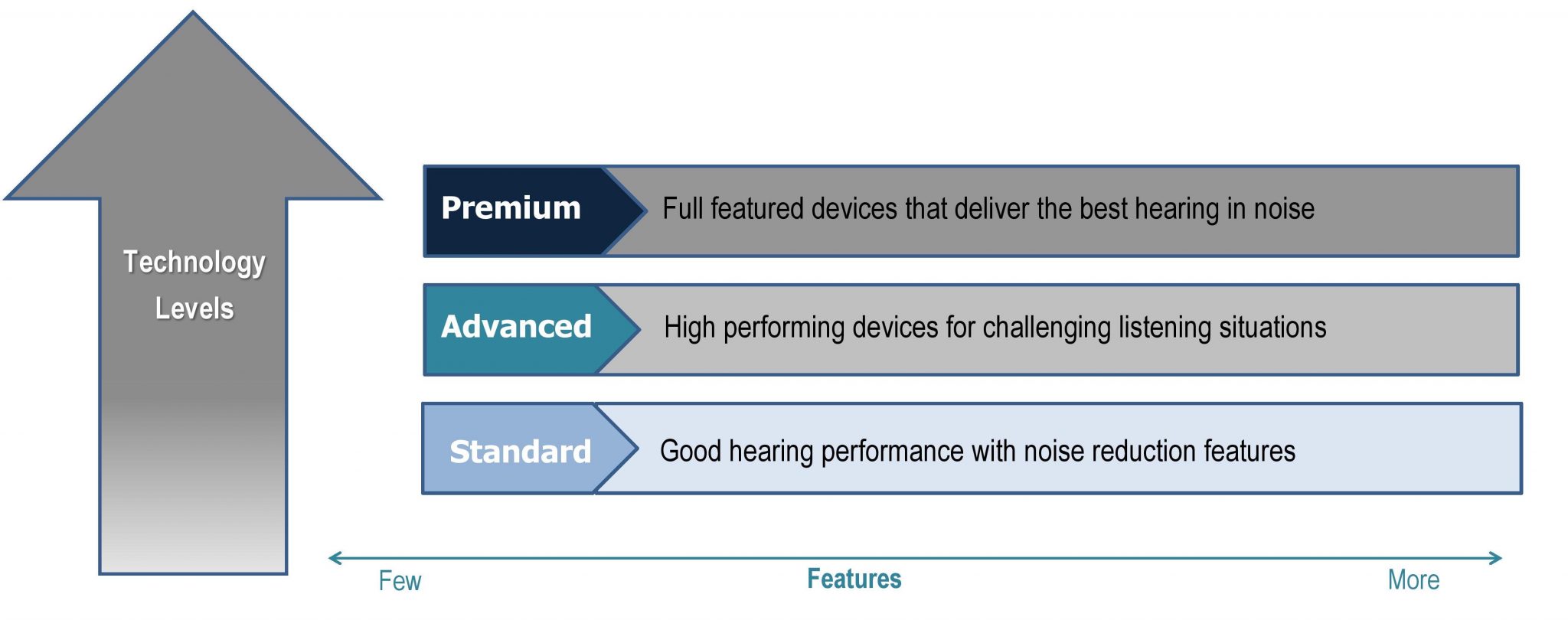Selecting the Best Hearing Aid
Do I Need a Hearing Aid?
When selecting the best hearing aid, ask yourself if you’re straining and fatigued to hear or feel isolated and left-out of social activities and gatherings because you miss parts of conversations? If the answer is yes, a hearing aid is strongly advised. Similar to eyeglasses for near or far-sightedness, selecting the best hearing aid will provide significant physical and emotional relief from the strain of struggling to hear, especially in groups when there is more background noise.
More importantly, most individuals report that after 1-month of hearing aid use, they feel more connected to others socially and experience a lift in energy and well-being with the world around them.

An added benefit to selecting the best hearing aid is that treating hearing loss may contribute to maintaining healthy mental health, as recent neurological studies reveal a strong correlation between hearing loss and cognitive disorders like dementia.
Types of Hearing Aids
Misunderstanding about selecting the best hearing aid occurs with how the hearing aid “looks”. Virtually all of the major hearing device manufacturers design a wide range of hearing device sizes, including tiny iic hearing aids (invisible in the canal), large bulking looking BTE hearing aids (behind-the-ear) or the most commonly fit RIC (receiver-in-the-canal) devices. Each of those sizes from each manufacture looks nearly identical and often only experienced hearing care professional can easily identify a hearing aid brand by how it looks.
The BTE hearing devices are designed for those with severe to profound hearing loss. Such losses require a lot of amplification power, thus the reason they are so big. The very tiny iic hearing devices can be discreet but typically don’t fit deep into the average ear canal due to ear canal size limitations and thus often are quite visible.
When selecting the best hearing aid, RIC hearing devices are the most commonly fit size devices. They have evolved towards being much smaller and available in different colors to match hair, which makes them more discreet.
Today’s devices automatically adjust to sound so there is no need to turn the volume up or down with switch or button as with older hearing devices. However, an “app” is available for iPhone and Android cell phones to manually change the hearing aid settings, monitor battery life, adjust the volume and have a cell phone conversation in stereo. Using Google maps, you can even locate the hearing aids if you misplaced them.
Recommended Hearing Devices
There are 6 major brands to consider when selecting the best hearing aid; Phonak, Starkey, Widex, Signia, Resound and Oticon. All produce excellent hearing aids and by clicking on the icons below, you can visit their websites to read about the features each has to offer.
How are hearing aids PRICED?
Selecting the best hearing aid marketed through the internet or magazines that claim to provide extraordinary hearing benefits and state-of-the-art components at bargain basement prices are a red-flag for concern. The old adage “if it sounds too good to be true, it probably is” applies to such advertisements and promises.
Hearing aid manufacturers design different “tiers” or technology levels for hearing devices. These levels have nothing to do with the size or appearance of the devices, but rather with the computer chip inside. While all the technology tiers are capable of providing an excellent improvement in hearing, the more advanced level tiers are marketed to provide ease of comfort in louder listening situations like restaurants.
Costs when selecting the best hearing aid between the 6 major manufacturers is very similar. Hearing aids are priced by tier or level of technology, from standard to advanced to premium levels.
Generally speaking, each upgrade of technology provides more comfort and features for improved hearing in background noise like restaurants. Each jump in tier costs approximately an additional $400/device. When selecting the best hearing aid, any new set of hearing devices from a reputable manufacturer should last for many years and can be serviced inexpensively should they later need repair.
Realistic Expectations
Hearing aids from the 6 major brands are customized to each individual’s hearing loss by an audiologist in the office using “real ear measurements”. This procedure is a must and the industry’s “gold-standard” for appropriately fitting hearing aids. Performed on the first day of fitting, seldom are further adjustments needed. However, the hearing aid can be re-programmed years late should a hearing loss worsen over time. Further information about real ear measurements can be found in an article from Healthy Hearing and a Youtube video from Dr. Cliff. After real-ear-measures are performed, expect the hearing nerve and brain to require 2-4 weeks to adapt to the devices until they sound natural and a hearing aid user is maximally benefitting from the devices.
Selecting A Hearing Healthcare Professional
Experience
It takes years of education, training and experience to become skilled with the assessment, selection and fitting of hearing devices. Because of this, rarely are even the most experienced hearing professionals able to proficiently dispense more than 2 brands and reliably stock inventory for them.
Education
Most audiologists have a Doctorate in Audiology and all must pass a national exam to practice. A hearing healthcare professional you feel confident and comfortable with who has been fitting hearing devices for a minimum of 5 years and responds to your direct questions with direct answers is essential.
Customizing hearing devices
Look for a hearing healthcare professional who uses “real-ear measurement” technology to customize devices to your hearing exam results. This procedure is the “gold-standard” for fitting hearing devices, which validates the devices will perform optimally based on your hearing test results.













